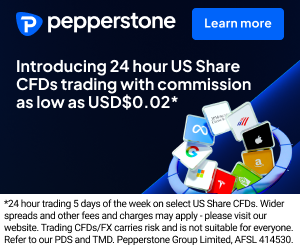5-MINUTE FOREX SCALPING STRATEGY GUIDE
The five-minute chart offers a sweet spot for scalpers: fast enough to catch multiple opportunities each session, yet slow enough to filter out much of the noise that plagues one-minute trading. This strategy provides clearer setups, more time to plan entries, and slightly wider targets that balance risk and reward. In this guide, we’ll explore the basics of five-minute scalping, outline structured setups that traders use, and detail how to manage risk effectively on this timeframe.

5-Minute Basics
Scalping in Forex is all about speed and precision, but not every trader wants to live on the edge of the one-minute chart. For many, the five-minute chart offers the best of both worlds: it’s still quick enough to deliver multiple opportunities in a single session, yet it provides a little more breathing room to analyse setups and avoid being overwhelmed by random market noise. Understanding the basics of trading on this timeframe is essential before building strategies around it, and the foundation lies in knowing why the five-minute chart stands out compared to ultra-short or longer-term timeframes.
Why Five Minutes Matters
The five-minute chart smooths out the erratic behaviour found on one-minute candles, which often flicker with price spikes caused by low-liquidity bursts or algorithmic trades. By stretching the candle length to five minutes, traders can see slightly more structured price action—trends, consolidations, and clean breakouts—without giving up the responsiveness needed for scalping. This makes it an ideal compromise for those who want to trade frequently but not frantically.
Another reason the timeframe matters is psychological. Five minutes gives traders time to make decisions with less stress. Instead of reacting instantly, you have a few more moments to weigh confirmation signals, check spreads, and size your position. This can reduce mistakes that often occur when emotions take over during ultra-fast trading.
Market Conditions Suited to Five-Minute Scalping
The five-minute chart works best in moderately volatile markets. Too much volatility and you’ll see whipsaws that destroy short-term trades. Too little volatility and you’ll struggle to find enough movement to cover spreads and commission. Ideally, traders look for sessions such as the London open or New York overlap, where liquidity and volatility balance to provide strong but controlled moves. Currency pairs like EUR/USD, GBP/USD, and USD/JPY are often favoured, as their spreads are tight and their intraday trends are clean enough to support scalping.
Exotic or illiquid pairs can be tempting because they sometimes move more sharply, but wide spreads and inconsistent behaviour often make them poor candidates for five-minute scalping. Keeping to majors or highly liquid minors ensures consistency and helps traders develop reliable habits on this timeframe.
Tools Commonly Used on the 5-Minute Chart
Scalpers on the five-minute chart often rely on a streamlined toolkit. Popular indicators include moving averages, which help define short-term trend direction; stochastic or RSI oscillators, which highlight overbought and oversold conditions; and Bollinger Bands, which frame volatility and provide cues for breakouts or mean reversions. The key is not to overload the chart but to focus on two or three tools that complement each other and deliver quick, actionable signals.
Price action itself is just as important. Many scalpers track candlestick patterns like pin bars, engulfing candles, or inside bars, which on the five-minute chart can indicate rapid reversals or continuation signals. Support and resistance levels drawn from higher timeframes (such as the 1-hour or 4-hour chart) also provide context, since price often reacts sharply at these levels even on shorter charts.
The Balance Between Frequency and Clarity
One of the main advantages of the five-minute chart is that it balances trade frequency with clarity. On a one-minute chart, traders might see dozens of potential signals per hour, most of which are unreliable. On a fifteen-minute chart, you may only see a handful of signals in a session, but each one tends to be stronger. The five-minute chart sits neatly in the middle, offering enough trades to keep you active without overwhelming you with noise. For many scalpers, this “sweet spot” is what allows them to refine discipline and avoid burnout.
Psychological Edge of the Five-Minute Timeframe
Scalping is mentally taxing, but the five-minute chart can ease that burden. Because candles take longer to form, traders are not constantly bombarded with micro-movements that can trigger anxiety or cause impulsive trades. This reduced pace allows for greater focus on execution quality rather than raw speed. It also creates room to think strategically, like deciding whether a breakout has volume confirmation or whether a retracement aligns with higher timeframe trends.
Many traders also find that they sleep better and experience less fatigue when they move from one-minute to five-minute trading. The psychological resilience built on this timeframe can be a hidden edge, giving traders consistency over the long run.
Challenges of Five-Minute Scalping
Of course, no timeframe is perfect. Five-minute scalping still exposes traders to spread costs, slippage during fast moves, and the constant need to monitor charts. The slower candle close can sometimes mean missing ultra-short bursts of profit that a one-minute trader might capture. Moreover, false breakouts are still common, and the slightly wider stop-losses needed for five-minute trades can increase potential losses if not managed properly.
Another challenge lies in discipline. Because the chart generates a moderate flow of signals, traders can fall into the trap of overtrading, entering every setup they see instead of filtering for the best ones. Without strict rules, even the five-minute chart can become chaotic.
Why It Appeals to a Broad Range of Traders
Perhaps the strongest argument for the five-minute chart is its versatility. It works for pure scalpers who want multiple trades per hour, but it also appeals to intraday traders who might use it as an entry chart aligned with signals from longer timeframes. This adaptability makes it a universal tool: a beginner can learn scalping fundamentals here, while experienced traders can refine advanced setups without drowning in noise.
For traders moving up from the one-minute chart, the five-minute feels calmer yet still rewarding. For those coming down from the 15- or 30-minute chart, it feels faster and more dynamic. That dual appeal explains why so many traders eventually gravitate to this timeframe as their primary battleground in the Forex market.
Structured Setups
Scalping on the five-minute chart works best when traders approach it with a structured framework. Unlike random entries based on intuition or “gut feel,” structured setups provide rules and repeatable conditions that can be tested and improved over time. The five-minute timeframe offers enough space for price action to form recognisable patterns while still delivering frequent signals, which makes it ideal for applying disciplined setups. In this section, we’ll cover some of the most reliable approaches —moving average crossovers, breakout patterns, pullback trades, and range plays —explaining how traders can use them to capture high-probability scalping opportunities.
Moving Average Crossovers
One of the simplest structured setups is the moving average crossover. On the five-minute chart, scalpers often combine a fast average—such as a 5- or 10-period exponential moving average (EMA)—with a slower one, like the 20-period EMA. When the fast line crosses above the slow one, it signals a potential short-term uptrend; when it crosses below, it suggests downward momentum. Because the five-minute chart filters out much of the noise found on the one-minute chart, these crossovers often reflect genuine shifts in intraday direction.
Traders using this setup often add confirmation filters, such as RSI or volume, to avoid false signals. For example, if the crossover suggests an uptrend but the RSI shows overbought conditions, the trader may pass on the setup or wait for a retracement before entering. This structured approach helps ensure trades are based on more than one technical cue.
Breakout Patterns
Breakouts are a staple of five-minute scalping. Prices often consolidate in small ranges before surging beyond support or resistance. Structured breakout setups involve marking key levels, such as intraday highs and lows, and waiting for candles to close above or below them with strong volume. Scalpers then enter in the direction of the break, aiming to ride the momentum for a quick profit.
The key to this setup is discipline: many breakouts fail, leading to “false breaks” where price reverses quickly. To reduce this risk, traders often combine breakouts with volatility indicators such as Bollinger Bands or the Average True Range (ATR). For example, a breakout accompanied by expanding Bollinger Bands suggests that volatility is increasing, confirming the move has substance. Structured rules such as “only enter breakouts during London or New York session overlaps” further refine the setup, filtering out low-probability trades during quieter periods.
Pullback Entries
Another structured method is trading pullbacks within a trend. On the five-minute chart, short bursts of momentum are often followed by shallow retracements before the trend resumes. Traders mark the short-term trend direction using moving averages or trendlines, then wait for the price to pull back into a support or resistance area before entering in the direction of the trend. This structure allows traders to enter at a better price, improving reward-to-risk ratios.
Fibonacci retracements are sometimes added to this setup, with traders targeting the 38.2% or 50% retracement levels of a recent impulse move. The rules might include waiting for a candlestick signal, like a bullish engulfing candle at support, before entering. Such a structure prevents traders from impulsively chasing moves and provides consistency across trades.
Range Scalping
Not all market conditions support breakouts or strong trends. In sideways markets, structured range-scalping can be effective. Here, traders identify a clear horizontal channel and look to buy at support and sell at resistance. The five-minute chart makes these ranges easy to spot and provides enough price movement for small profits when spreads are tight.
Rules for range scalping might include entering only after the price has tested support or resistance multiple times, or combining entries with oscillator signals showing overbought or oversold conditions. Stop losses are placed just beyond the range boundaries to protect against breakout scenarios. Because ranges often break eventually, traders must be prepared to exit quickly if momentum builds against their position.
The Role of Higher Timeframes
A common mistake among scalpers is ignoring higher-timeframe context. Even when trading on the five-minute chart, structured setups become stronger when aligned with signals from the 15-minute, 1-hour, or even daily charts. For instance, a five-minute breakout setup in the same direction as the daily trend has a higher chance of success than one that runs counter to it. Adding this layer of structure ensures that trades are not just random noise but part of broader market momentum.
Some traders adopt a top-down approach, first analysing the one-hour chart to identify the dominant trend, then zooming into the five-minute chart to look for structured setups in that direction. This disciplined practice ties small trades to larger narratives, improving win rates over time.
Case Study: London Breakout
One classic structured setup for the five-minute chart is the London Breakout strategy. This involves marking the high and low of the Asian session, then waiting for London to open and break one of those levels. Traders enter the breakout direction and set short targets for a scalp. Because London brings a surge in liquidity and volatility, this structured rule often captures strong early moves without the randomness of other times of day.
Structured rules might include exiting after a fixed number of pips or when volatility starts to fade. Over time, traders refine this strategy by backtesting it across pairs to find which ones respond best. This illustrates how structured setups create consistency and help avoid emotional decision-making in the heat of the moment.
Balancing Structure with Flexibility
While structure is essential, traders must avoid rigidity. The Forex market is dynamic, and conditions shift quickly. A structured setup provides a framework, but scalpers still need flexibility to adapt—for example, skipping a breakout trade if spreads widen unexpectedly due to news events, or avoiding range scalping in the minutes before a major economic release. The art lies in following the structure without blindly forcing trades when conditions don’t fit.
This balance is what separates skilled scalpers from beginners. Structure gives discipline, but experience teaches when to bend the rules. Over time, traders refine their setups by combining statistical evidence with practical judgement, building systems that are both robust and adaptable.
Risk Management
No matter how refined a trader’s setups are, scalping without solid risk management is like driving at high speed without brakes. Because scalping operates on small timeframes and aims for modest profits per trade, losses can quickly pile up if not carefully controlled. Effective risk management is not about avoiding losses altogether—that is impossible—but about ensuring that no single mistake or series of mistakes can wipe out weeks of steady gains. In this section, we’ll explore the pillars of risk management for five-minute scalpers, including position sizing, stop-loss placement, managing spreads and slippage, and the psychological discipline required to execute consistently.
The Principle of Small Risk per Trade
The golden rule in scalping is to risk only a tiny fraction of your trading capital on each position. Many seasoned traders recommend limiting risk to 1% or less of account equity per trade. On a $10,000 account, that means risking no more than $100 per trade. This might sound overly cautious, but given that scalpers may take 10 or more trades in a single session, the cumulative effect of poor risk control can be devastating. Keeping risk small ensures that even a losing streak leaves enough capital intact to recover when conditions improve.
Position Sizing
Position sizing determines how much currency you buy or sell on a trade. In scalping, precision matters because small moves translate into equally small profit margins. For instance, a five-pip stop-loss with a two-pip spread requires careful calculation to avoid overexposure. The formula most traders use is straightforward: calculate the difference between the entry and stop-loss in pips, multiply it by the pip value, and adjust the lot size so that the total risk equals the predetermined percentage of capital.
For example, suppose a trader risks $50 per trade and sets a stop-loss at 5 pips. If each pip is worth $10 on a standard lot, the trader can afford only 0.1 lots to stay within their risk tolerance. This type of mechanical calculation prevents emotional decision-making and keeps risk proportional across trades, regardless of market conditions.
Stop-Loss Placement
Stop-loss orders are non-negotiable in scalping. Without them, a single sharp move against your position can erase the gains from multiple successful trades. The challenge is placing stops tight enough to protect capital without making them so tight that normal market noise knocks you out prematurely. On the five-minute chart, traders often set stops just beyond recent swing highs or lows, or use volatility-based stops, such as multiples of the ATR (Average True Range). For example, if ATR on the five-minute chart is four pips, a trader may set their stop at 1.5x ATR, or 6 pips away from entry.
Another approach is structural stops: if entering a breakout, the stop is placed just inside the broken level, so that if the price falls back inside the range, the trade is invalidated. By aligning stop placement with logical chart points, traders ensure that exits are triggered only when the market truly invalidates the setup.
Managing Spreads and Slippage
Because scalpers work with tight profit targets, transaction costs such as spreads and slippage can erode profitability. A spread of two pips on a trade targeting five pips eats up 40% of potential profit before the trade even begins. To mitigate this, scalpers should trade only the most liquid pairs during peak sessions, such as EUR/USD or GBP/USD during the London–New York overlap. Choosing a broker with competitive spreads and fast execution also makes a meaningful difference.
Slippage—the difference between expected and actual execution price—often occurs during news events or sudden volatility spikes. To reduce its impact, scalpers can avoid trading around high-impact economic releases or use limit orders instead of market orders when precision is critical. Over the long run, careful management of spreads and slippage can mean the difference between a profitable scalping strategy and one that merely breaks even.
The Role of Risk–Reward Ratios
Conventional swing trading wisdom emphasises risk–reward ratios of at least 1:2, meaning traders aim to make twice as much as they risk. In scalping, this ratio is often lower due to the small target sizes. Many scalpers work with risk–reward ratios closer to 1:1 or 1:1.5. This is acceptable if the win rate is sufficiently high. For instance, a scalper winning 65% of trades with a 1:1 ratio can still achieve steady growth. The key is to test setups and know the realistic win rate so that expectations align with performance.
Psychological Discipline
Risk management is not purely mathematical—it is also psychological. The fast pace of five-minute scalping puts immense pressure on decision-making. Traders must resist the urge to increase lot sizes after a few wins or to chase losses by doubling down. Consistency is the hallmark of professional scalpers: they risk the same percentage per trade, follow stop-loss rules without hesitation, and avoid revenge trading after setbacks. This level of discipline often separates those who survive long term from those who blow up accounts.
Developing psychological resilience often requires setting daily loss limits. For example, a trader might decide to stop trading for the day if they lose more than 3% of their account. This rule prevents emotional spirals and keeps capital intact for the next opportunity. Journaling trades, including the emotions felt during execution, also helps build awareness and control.
Adapting Risk to Market Conditions
Markets are not static, and risk management must adjust accordingly. During periods of high volatility, spreads widen and price swings become unpredictable, requiring smaller position sizes or wider stops. Conversely, in quiet sessions, scalpers may tighten stops and increase trade frequency. Adapting risk dynamically ensures that strategies remain robust across different market environments.
Some traders incorporate volatility filters, refusing to trade when ATR falls below a certain threshold, signalling insufficient movement to justify scalping. Others reduce trade frequency after major news events to allow the market to stabilise. Structured adaptability keeps risk proportional to opportunity, protecting both capital and confidence.
The Compounding Effect of Small Edges
The ultimate goal of risk management in scalping is not to produce spectacular single trades but to compound small edges consistently over time. Protecting capital ensures that profitable days add up without being wiped out by occasional setbacks. A scalper who averages just 0.5% daily growth through disciplined risk management can more than double their account in a year. This compounding potential is only realised if losses are kept small and controlled.
Seen in this light, risk management is not a defensive measure but the engine of long-term success. Structured rules for position sizing, stop placement, cost control, and psychological discipline transform scalping from a high-risk gamble into a sustainable trading approach.








